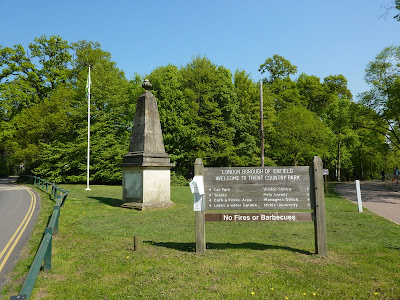 |
| Yarmouth Station |
The Isle of Wight is a haven for railway path walking and cycling, partly as a sad result of the wholesale closures of the 1950s and 1960s, but also the thinking of local authorities who managed to preserve at least some of each of the closed lines for recreational use. Since most of the sections of line are relatively short, I had considered a day of exploration covering several lines for a long time.
 |
| Yarmouth Wharf |
The first of the lines that I visited on the day was the former Freshwater and Yarmouth Island . Given the time that has passed since its closure, it is something of a miracle that any of it has survived but the 3 mile section of trackbed between Yarmouth
 |
| Railway Carriage Home |
The original railway was a 12 mile branch line from Newport
 |
| Yarmouth Countryside |
The line always had a chequered history, mostly associated with sparse traffic and sailed close to bankruptcy until British Rail finally gave up on it in 1953. After closure and perhaps because of its rural nature, most of the line became absorbed into the countryside as part of farmers fields, while several of the station buildings were recycled into new uses. Between Newport and Yarmouth
 |
| Yarmouth Harbour |
The part of the railway path that is available for use begins on the B3401 just outside Bouldnor. There is a parking area alongside the road, although spaces are limited and I suspect very popular during the summer. I parked around the corner in the public car park, which is free. The rail line begins abruptly just north of Thorley Bridge
 |
| Heading South |
Heading westwards though the story is different, with their being a well maintained path through the reeds of Rofford Marsh. The railway origins of the path are not at all obvious to begin with, but that all changes after half a mile or so when the former Yarmouth station is reached. Against the odds the old station has survived and is currently used as a youth centre. It is well maintained and is in remarkably original condition. It would be easy to imagine waiting on the platform for a train to arrive, although none have actually stopped for passengers for nearly sixty years (almost as long as the station was open for traffic!).
 |
| Freshwater Church |
The line now changes direction as it reaches the formidable obstacle of the River Yar, heading alongside this very attractive tidal estuary. As the line swings away from the small town of Yarmouth
 |
| Tidal Limit |
Initially on the route south the old line runs through open estuary fringe with extensive views across the water, albeit through the reedbeds. It is a section of line remarkably similar to the Hayling Billy, although the surface is much smoother and more cycle friendly. After a short stretch the line then enters some very pretty woodland and it was easy to see why the closure of the line was fiercely opposed.Sadly, in these early days of railway closures very few protests were listened to. If the line were running now it would undoubtedly be a very popular tourist attraction, for it is very scenic.In the early spring sunshine the woodland was beginning to wake from its winter slumber and many of the leaves and blossom were out in full force. In a couple of places it was possible to head down to the water’s edge and look out across the estuary and to the attractive church of Freshwater
 |
| Crossing Keeper's Cottage |
Once I had passed by the woodland, I passed another surviving railway building, the crossing keepers cottage at Freshwater. Once there would have been a level crossing across the road known as the Causeway controlled by the crossing keeper. Now the cottage is just another attractive house with its origins almost forgotten. At the adjacent bridge across the River Yar, its flow lessens considerably and is almost lost entirely within the reeds.
 |
| Tree Lined Track |
The path continues on for approximately half a mile until coming to an abrupt left hand turn. This is the point at which the railway line path stops; the line would once have continued onward into Freshwater station just beyond the fence. The site is now occupied by a garden centre and Co-op store. The only clue of its existence is the aptly named ‘End of the Line’ café, which even has some station awning as decoration to the outside of the building. As a station, the location of Freshwater was very inconvenient for any of the local attractions being too far from the beach at Freshwater Bay
 |
| Site of Freshwater Station |
For me this was the point at which I retraced my ride back to Bouldnor, but walkers could make a circular route by heading by road to Freshwater Church and then continue along the other side of the estuary via the waymarked Freshwater Bay and thence by coast path through Yarmouth Newport







































